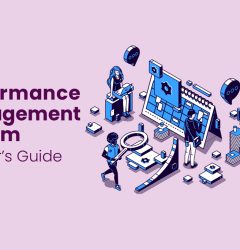The Basics of Competency Assessment and Its Importance
- By admin
- No Comments
10 May

Introduction
Investing in systematic and effective employee assessment processes is important for any organization to be successful. While there are different ways of carrying out such assessment techniques, one of the most popular ones is competency assessment.
This article will take you through the basics of this technique, starting from what is competency assessment and its benefits and key elements.
Learn how PossibleWorks can help you
What is competency assessment?
Let’s start with competency. Competency is defined as a person’s skills or abilities to complete a particular task successfully. An employee could use 10 different skills to deliver a particular job. However, not all of these 10 skills can be considered his/her competence. Only those critical few, without which the job could not have been done at all, come under the competency category.
Competency assessment is the assessment of an employee’s skills in comparison to the role requirement. The latter part of this sentence is important and has to be understood.
Let’s take an example. An employee may be an expert in debugging codes. However, if the person is a business development executive and not a tester, debugging may not be a competency the workplace is looking for. This competency is not a role requirement in this case.
Organizations can create employee competency assessment models that clearly understand different roles and their preferred competencies. This helps the organizations in several ways.
Why do you need to assess competency?
The key reasons why organizations should take up competency analysis are – to identify & document key skills needed to complete a job, assess the employees on these skills, and ensure they are well-suited as well as able to deliver on their roles. If there is a gap between employee competencies and job requirements, then this can be fixed with the help of training and development or mentoring sessions. In some cases, job rotation can also take care of the gaps. There are several other benefits of competency assessment as follows.
Creating custom-learning environments
All organizations invest heavily in the training and development of their employees. However, the effectiveness of the same is often moderate. When a single learning and development plan is used for training thousands of employees, how can we know if the employees benefit from the experience?
The employee competency assessment process will help exactly find areas that the employees lack. This will help build a customized learning and development schedule that the employee can make use of.
Creating a space for improvement
Only organizations that constantly strive to improve can sustain and grow in today’s world. How best can you do this other than investing in employee competencies? Employees, who are exactly trained for a particular job right now, could be outdated soon, thanks to rapid developments in technology.
Therefore, employees are in constant need of re-skilling their competencies. Detailed competency analysis will help understand where re-skilling or up-skilling is needed, and the organizations can encourage employees to work on their core skills.
Knowing the right action to take
Sometimes, employees with no skills in their particular role may handle processes for long, not letting the role deliver as intended. Such employees get disengaged with their roles, and this reflects in their personalities and productivity levels. In scenarios like this, it is very easy to identify such misalignments by getting an employee competency analysis done. This way, you can take the right action of either switching the role of the employee, offering supportive training, or letting the employee go in the worst cases.
We also recommend reading our blog on employee engagement 2022 tips, which should help in such situations.
Having the right data for performance appraisals
Performance appraisals have become 360-degree processes in many organizations where employees are regularly monitored, mentored, and given feedback. When you constantly invest in employee competency assessment, measuring job responsibilities, employee skills, and the subsequent gaps, it becomes easy to put together a fair and thorough performance appraisal plan in place. Competencies have started becoming part of the feedback process.
Goal setting
Let’s say your organization is thinking of following goal-setting frameworks like OKRs. What kind of goals would you set? Are the goals in line with the employee’s capabilities? Competency assessment helps in answering such critical questions.
A competency assessment process will tell you the practically achievable goals that employees can take up then, based on their current competencies. Whilst we are talking about OKRs and goal-setting processes, here is a blog that will help you get started with OKRs.
Discussing career objectives
Do you want to discuss career objectives with employees? The best time to do this is after a competency assessment. When it comes to top performers and employees you want to retain for a longer period, talking to them about aligning their goals and skills with the company’s requirements is important. The competency assessment will give you the right platform to make this discussion.
The key elements of employee competency assessment
There are three key elements needed for any competency assessment process to be successful. We will look into each of these in detail.
-
The right model
The right model is the most basic need for the competency assessment process to succeed. What does this mean? A competency model is a framework that lists all the skills required for different roles. Only when you have this right can you compare employee skills and identify gaps.
You can create the right framework in two steps.
- Identify the competencies first.
- Build supportive data by collecting evidence of competencies. This means that you need to prove these are the critical competencies needed for doing a job well.
This step forms the basis of your competency assessment model.
-
A system that allows for scaling, improvements, and employee privacy
Now, let’s say you have created a well-defined competency assessment framework. What happens next? You need a supportive environment and the right processes to map these competency requirements with the skills of the employees. There are tools available to help ease this step, or you can choose to do these manually using spreadsheets and questionnaires. However, do remember that the manual way is process-intensive and won’t work for medium-sized and large organizations.
PossibleWorks’ Performance Management Tool can help streamline this step by easily identifying specific skills and capabilities of employees. Do remember that this tool would have been collecting precious employee performance data since the very beginning, helping you quickly understand the core capabilities of each employee.
Now all that is left for you to do is match the requirements and available competencies and identify gaps.
-
The right up-skilling or re-skilling processes to support improvement
Once the employee competency assessment is done and the gap is identified, the last step is filling the gap. This can be done in several ways, as mentioned above. You can encourage your employees to take courses and certifications to re-skill themselves or attend training sessions to up-skill themselves. You can also find out if job-switching will place the right-skilled employees in the right roles.
Organizations that spend considerable money on training and development can make the process more effective by performing a competency assessment process and then creating training and learning modules.
Employees, in fact, welcome re-skilling or up-skilling opportunities. According to a survey, 74% of employees say that they are willing to re-train or learn new skills to remain employable. It is the organization that should offer these opportunities.
“74% of employees are willing to up-skill or re-skill themselves”
Conclusion
We hope this article has given you detailed answers to questions like what is competency assessment and what are its benefits.
Competency assessment is a great way to understand how supportive your human workforce is for your organization’s growth. Are your employees lifting you higher up the radar or pulling you back? Are they your strengths or your weaknesses? Answer all these questions after you complete a thorough competency analysis procedure.
You may have a great workforce. If their skills are not utilized well, spending extensively on compensation and benefits makes no sense. You can also ensure this with competency assessment processes.
If you have not been practicing competency assessment in the workplace, this is the right time to get this done. Getting competency assessments done regularly will help you retain back the best of your employees, who give their very best for the growth of your organization.
Are you using the right technology for your Recognition programs?



